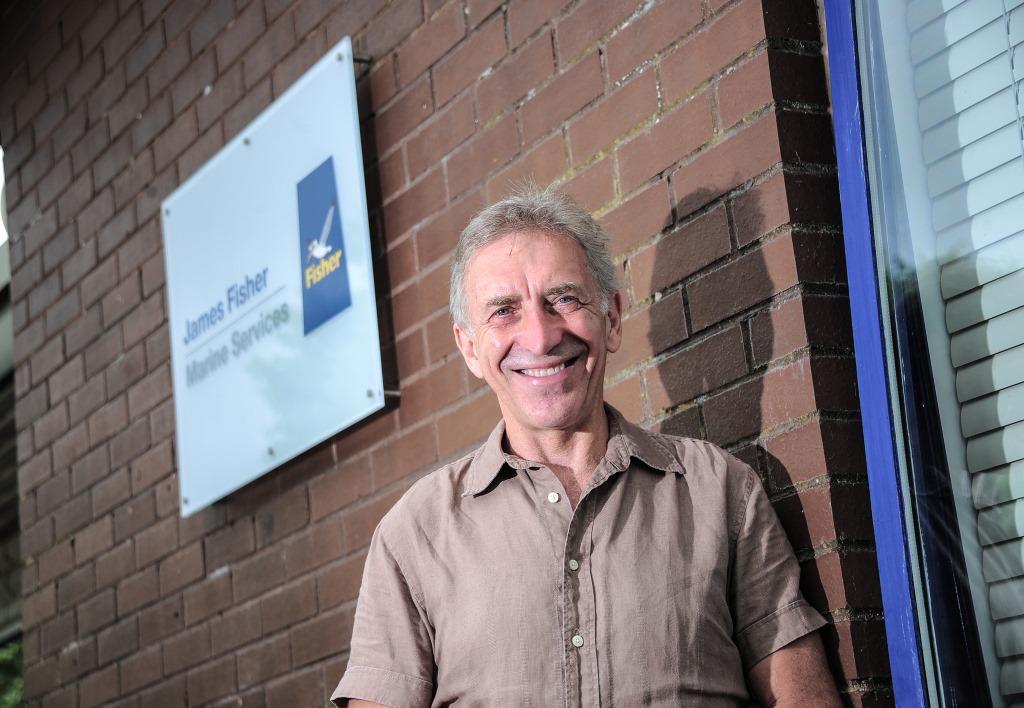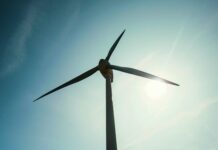Cornwall and the south west could become a centre excellence for the development of a global floating offshore wind industry.
That’s the ambition of the Cornwall & Isles of Scilly Local Enterprise Partnership (LEP), which has developed a strategy to promote the region as an ideal location for floating windfarms that could generate energy miles offshore and not be visible from land.
Cornwall and the Isles of Scilly are already at the forefront of marine technology with the local supply chain providing products and services to offshore renewable energy clients throughout Britain and across the globe.
And with one of the best offshore wind resources in Europe, coupled with sea areas with the depths required for floating wind turbines, the south west could lead the global development of a new industry with huge export potential.
Steve Jermy, marine and energy lead on the LEP board, who is also chairman of the Marine Offshore Renewables Group in the south west, said: “The emerging floating offshore wind industry could do for the south west what fixed offshore wind has done for the East of the country, transforming communities, creating hundreds of jobs and making a vital contribution to the UK’s low carbon energy mix.”
Most of the offshore wind deployment until now has been restricted to the shallow waters of the Irish Sea and the southern North Sea, with depths less than 50m. But last year the world’s first commercial floating offshore windfarm, called Hywind, opened in 129m of water 15 miles off the Aberdeenshire coast. Its majority owner, Norwegian energy giant Equinor, believes it could deploy in depths of 800 metres and the windfarm has exceeded performance expectations.
It is estimated that up to 80% of world’s potential offshore wind sites are located in waters more than 60m deep, which is the limit for conventional offshore wind turbines that are fixed to the seabed. This means the international floating offshore wind market is significantly larger than that of fixed offshore wind. The ideal British sea areas with depths to deploy floating offshore wind are off the coasts of the south west, Wales and Scotland.

In response to this opportunity the LEP has developed a floating offshore wind strategy, which envisages early deployment of a pilot floating offshore wind array of around 36MW, followed by pre-commercial arrays of 100MW and then early commercial arrays of between 500MW, with an overall target of 1,000MW by 2030.
A key feature of the strategy is to reduce the costs to consumers of floating offshore wind at a much faster rate than was the case with fixed offshore wind; in part by drawing on the lessons of the fixed offshore wind journey.
Next week (October 30) the LEP will be promoting the south west’s potential at RenewableUK’s Floating Offshore Wind 2018 conference and exhibition in Aberdeen.
Jermy said: “Our region, with Scotland, is already one of the world’s two leading wave and tidal energy regions, with offshore operations experience, a network of world-class marine research institutions, world-class test and evaluation facilities such as Wave Hub, and a Marine Enterprise Zone offering incentives for investing offshore renewable businesses skills. All of this is immediately portable into the nascent floating offshore wind sector.
“We are therefore engaging with Government, the Crown Estate and the Marine Management Organisation to develop a project pipeline for the deployment of at least 1GW of floating offshore wind in the South West by 2030.
“The development of floating offshore wind technology opens up vast areas of ocean with excellent wind resources. For this reason, we judge that the floating offshore wind export market is at least twice the size of the fixed offshore wind market. Floating offshore wind platforms can be mass produced and host the very largest offshore wind turbines. Furthermore, because turbines can be sited far offshore and won’t be visible from land, we avoid the aesthetic issues that have blighted the onshore wind planning process.”
The offshore wind industry has a target to achieve 50GW of offshore wind generating capacity by 2050, and it is likely that at least 10GW of this will be delivered by floating offshore wind, and potentially more. This means the South West could make a significant contribution.
The UK Government’s Clean Growth Strategy recognises the jobs and industrial benefits of offshore wind, and singles it out as a sector where the UK has world-leading expertise and technology. Offshore wind also features prominently in the Government’s Industrial Strategy, especially when it comes to export potential. The world market for offshore wind is estimated to reach £30 billion by 2030 and £55 billion by 2050.
The UK already leads the world in both installed and planned offshore wind projects, with 36% of the global market at the end of last year. There are now more than 1,800 fixed offshore wind turbines installed in UK waters, with a generating capacity of 7.2GW, enough for six million homes.
The LEP believes the south west’s floating offshore wind strategy has the potential realise three key opportunities. First, to deliver subsidy-free clean renewable power to the south west, by 2030; second, to bring to the region the jobs and economic growth that fixed offshore wind has brought the East of Britain; third, to position Britain as a world-leader in an international market that is rapidly growing and likely to be twice the size of fixed offshore wind.









In Cornwall we have mass underemployment. It is a shame that the LEP always wants to focus on what I call vanity projects, rather than focus on the real needs of the people in the county. Examples of fruitless vanity projects so far – WaveHub, Bloodhound, Spaceport.
Comments are closed.